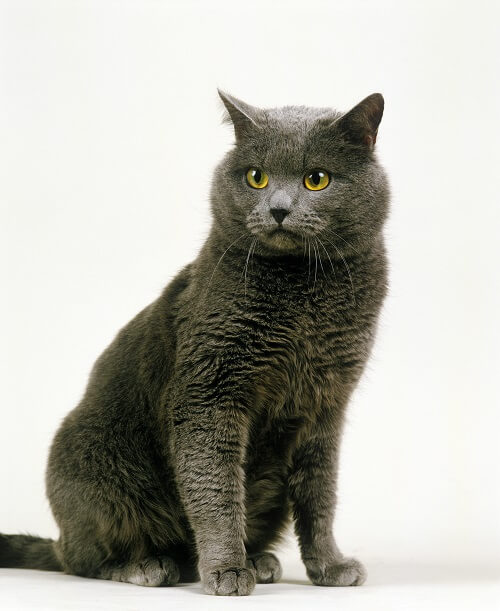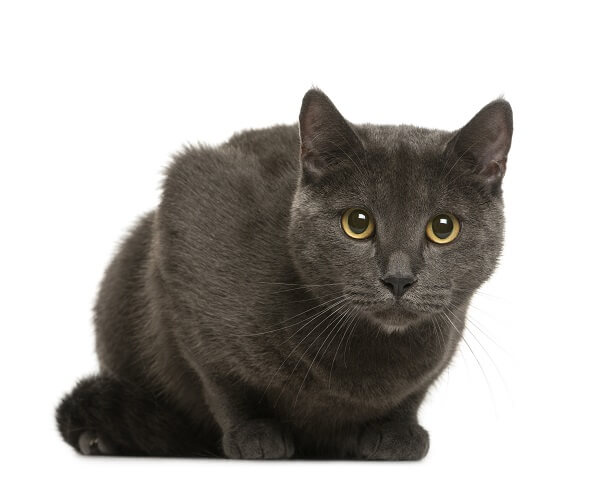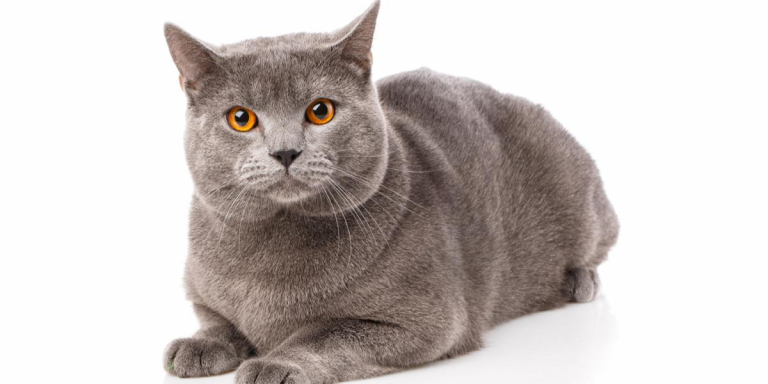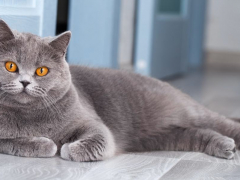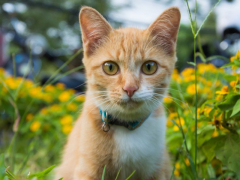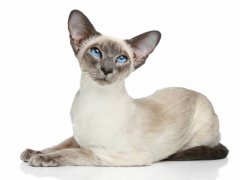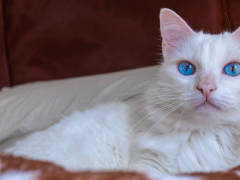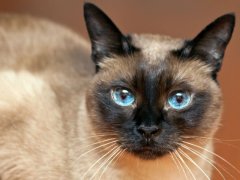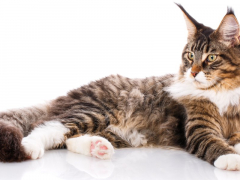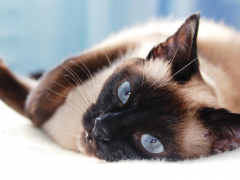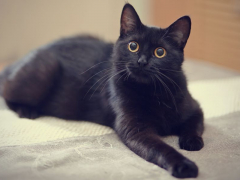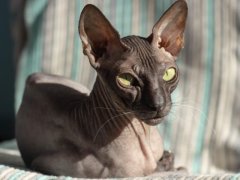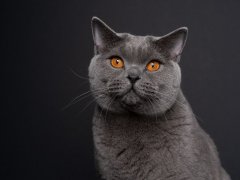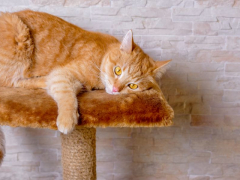Personality and Temperament
Exquisite blue coats, intelligent personalities, and smiling faces make the Chartreux stand out. This old French cat breed was nearly wiped out during the first and second world wars and remains rare today.
Chartreux cats bond with their families but tend to prefer one individual over everyone else. They have a tendency to follow their favorite person from room to room, sometimes mewing or chirping softly. If you're looking for a cat with a reputation for quiet vocalizations, the Chartreux may be ideal; in fact, some Chartreux cats are mute.
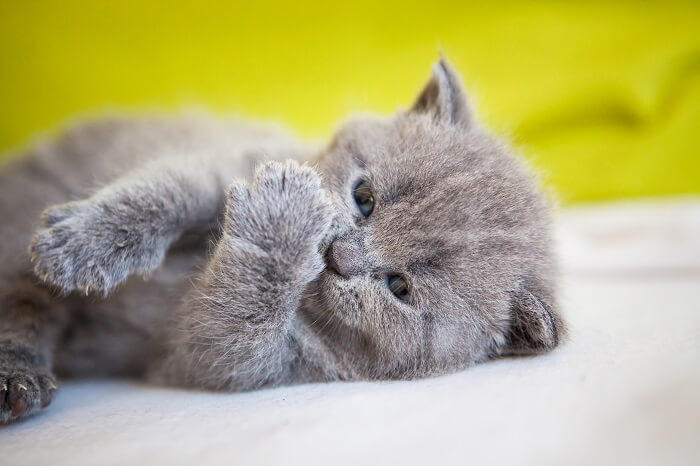
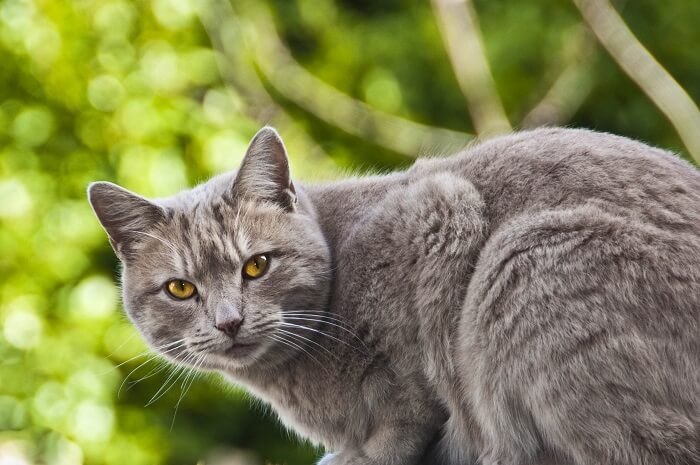
Care
Nutrition
Grooming
Exercise
Health
The Chartreux cat requires no special diet; however, we recommend feeding a high-quality cat food with omega-3 fatty acids to promote skin and coat health.
Chartreux cats have thick, luxurious coats with a unique woolly texture. These cats require regular brushing to prevent excess shedding, hairballs, and the occasional knot.
While the Chartreux cat enjoys playing with toys and climbing cat trees, the breed isn't terribly active as a rule. You'll want to encourage play to prevent obesity, but Chartreux cats aren't prone to hyperactivity when playtime is missed.
Chartreux cats are generally very healthy and enjoy a lifespan that extends an average of 12 to 15 years. A few known health issues surface in some individuals, including patellar luxation, bladder stones, and polycystic kidney disease.
History
Although legend states that today's Chartreux cats are descendants of cats that were originally imported to France by Carthusian monks, the monastic order states that no archives hold records of historic use of cats resembling the Chartreux breed.
A separate legend states that Chartreux cats are descended from feral mountain cats that originated in Syria and that were brought to France in the 13th century by Crusaders. French naturalist Buffon officially describes the breed in the 18th century. The cats are renowned as excellent hunters and were highly prized by farmers for their rat-catching prowess.
Chartreux cats were nearly wiped out during the first world war. Wild populations disappeared by the end of the second world war. At the same time, European breeders worked together to prevent all-out extinction, crossbreeding with Persian, British Shorthair, and Russian Blue cats that strengthened the breed.
Chartreux cats made their way to the United States in 1971. The breed was advanced to championship status after being accepted by the Cat Fanciers Association in 1987. All cat fancy organizations recognize the Chartreux cat breed.
